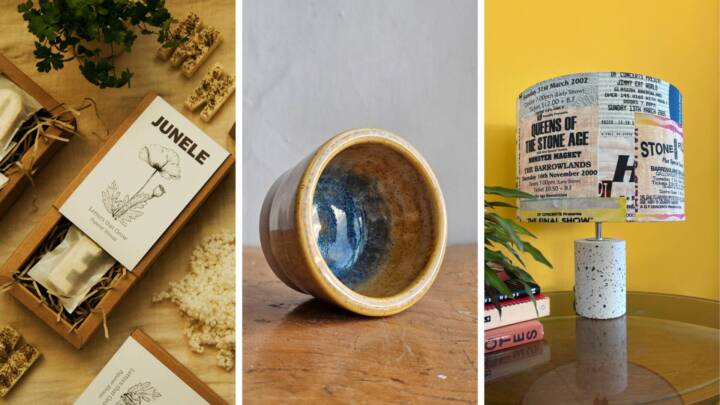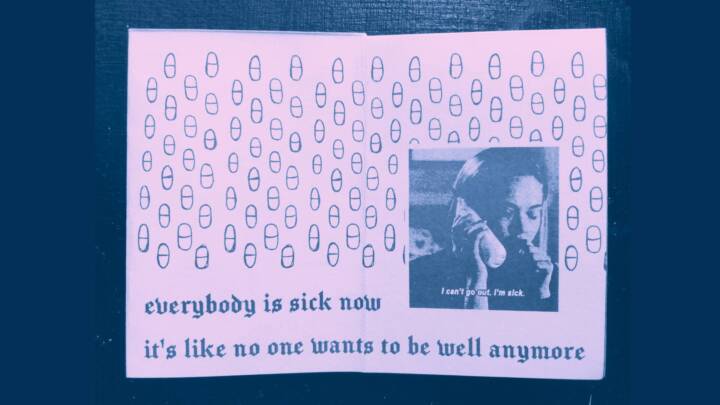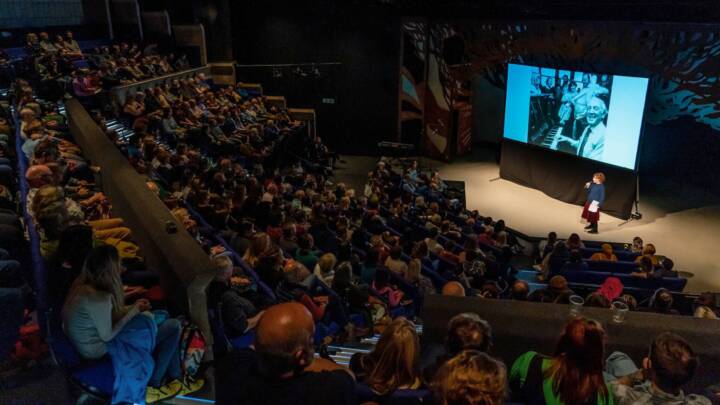
On Spotlight we have informal conversations with different people about their practice and how it relates to life in Dundee. Continuing our January focus on the Environment and its intersections with activism and creativity, we’ve interviewed Dr Rebecca Wade, Senior Lecturer in Environmental Science at Abertay University, to share some insight on her experience.
Sam Gonçalves: Thanks for taking the time to do this, I think it’s pretty important for us to talk about the environment right now, as a community.
Dr Rebecca Wade: Yes, absolutely! This is a critical time for the environment, and for society. More than ever before we need to encourage conversations, creativity, collaborations, innovations and actions to address global warming, climate change and to look after the environment that supports us. There is no country in the world that is not experiencing the effects of climate change. Scotland is no exception, the effects of climate change are already here, raised temperatures, increased rainfall and less snow cover. These changes impact growing, breeding and migration seasons, and impacts biodiversity. We can’t ignore this, we need to figure out how to be sustainable and to live well in a changing climate. We need to work across disciplines and across agencies deliver change. This is challenging and exciting too. I’m really passionate about working across disciplines, so I can see possibilities and opportunities (as well as challenges), one thing is certain, we all need to get involved, and we need to include creativity in these conversations.
SG: Can you tell me a bit more about your work at Abertay?
RW: My title is Senior Lecturer in Environmental Science, I engage in both teaching and research. I’m interested in how people impact on and interact with their environment and how the environment impacts on people. In particular, I research sustainable water management and rivers, I’m also very interested in the benefits we get from urban green and blue spaces, the parks and rivers, the spaces between buildings.
SG: And is your interest in a specific area or location?
RW: Most recently I’ve been working in Dundee on the health benefits we can get from urban greenspace, it’s a really exciting agenda bringing together NHS Tayside, Dundee City Council and researchers at both of the city’s Universities. Outside of the city I work on a river restoration project up in Glen Clova, it’s one of my favourite places to do research. But I’ve also worked on projects in the USA, Brazil, and all across Mediterranean Europe. In all of these locations, I’ve been working in multi-disciplinary teams tackling real-world issues related to water management, rivers and green infrastructure, and linking that to the benefits people gain from nature. These benefits can range from environmental benefits (protection from flooding and drought, improved air quality, carbon savings, enhanced biodiversity, and climate change adaptation), to societal benefits (increased physical and mental health and well-being, social inclusion, active travel).
SG: What can that look like?
RW: Well, for example, sustainable drainage systems and natural flood management systems, tend to use green infrastructure as opposed to grey infrastructure. Green infrastructure systems can manage water issues but at the same time improve community greenspaces, making them better places to play, exercise and spend time with others. Sustainable drainage systems are really interesting because they are engineered, but are based on mimicking natural processes and using more natural materials. I’m interested in the question of how we can manage natural spaces in cities so that people can experience and benefit from a more natural environment, whilst at the same time, we still need to fit in all the services, facilities and infrastructure that cities rely on. Wherever possible; more green infrastructure, less grey infrastructure!
SG: What can those two types of infrastructure look like?
RW: For example, where we are sitting out here right now. All the hard surfaces… there isn’t much green is there?
SG: Nope.
RW: So, we’re sitting in a place that is predominantly paved, there are roads and roofs… none of these surfaces would let water flow through into the soil, none of them would let the soil recharge the ground with water. All of this area is drained with pipes that lead to sewers which can overflow, or speeds-up the surface flow so that somewhere, at the bottom of the hill, gets flooded.
SG: And what would the green infrastructure look like instead?
RW: I often take students and visitors to Dundee up to Ardler. It’s a development which has gone through several changes over recent last decades and it’s always had a flooding problem. If you go there, you’ll notice there’s a pond in the west and a pond in the east, next to the shops. Between them there’s a grassy ditch which is a swale and other pieces of green infrastructure all around. This was an early example in Scotland of trying to create sustainable drainage systems, we call them SuDS. It’s basically taking the rainwater out of pipes and letting it be in ponds, letting it run across grassy surfaces. As it infiltrates into the soil, it slows down the flow of water, taking the pressure off the pipes and sewers. At the same time it filters out some of the pollutants and impurities, and it starts to mimic the natural water cycle. As well as all of that we get green community spaces.
SG: And I guess creating these green spaces, and encouraging a natural cycle, ends up having other positive effects.
RW: These systems, if well designed, can look great and be great for wildlife too, increasing biodiversity in the city. We find that this increases people’s enjoyment of the places they spend time in, so they spend more time outside, which means their health and mental health improve too. So, really, the work we’re doing is about the environment and green engineering but it’s also about health, wellbeing and city life, which is why it needs to be cross-disciplinary. We have a track record in working together with the local council, health services, water companies, environmental agencies and businesses. I have also worked with game developers, artists, poets and musicians, there are so many possibilities as to how we can think about these challenges and how we can all work together.
SG: What can creativity do to help the environment? What are practical things that maybe people who are reading this can do?
RW: We need creativity to be central to our research and to how we communicate so that we can inspire more people to go out and enjoy and nurture the greenspaces in their city, and to change behaviours, even in small ways, to help our environment. Perhaps more of us could decide to walk or cycle (instead of taking our cars), join in with litter-picks, grow food in community gardens, or do something creative in nature, making sure that more art and creative activities happen around green spaces in the city. One thing is for sure, we need to use and care for our green spaces because they support us right back (reducing flooding, purifying the air, providing spaces to play and relax), they are part of the solution to help us adapt to a changing climate.
SG: I guess even just using those green spaces in itself is a form of advocacy, it shows that there is demand and people want to use them.
RW: Yes, we have to address this collectively and we have to be a little bit creative.
SG: Thank you so much for chatting with us!
RW: It’s been my pleasure, Thank you!



